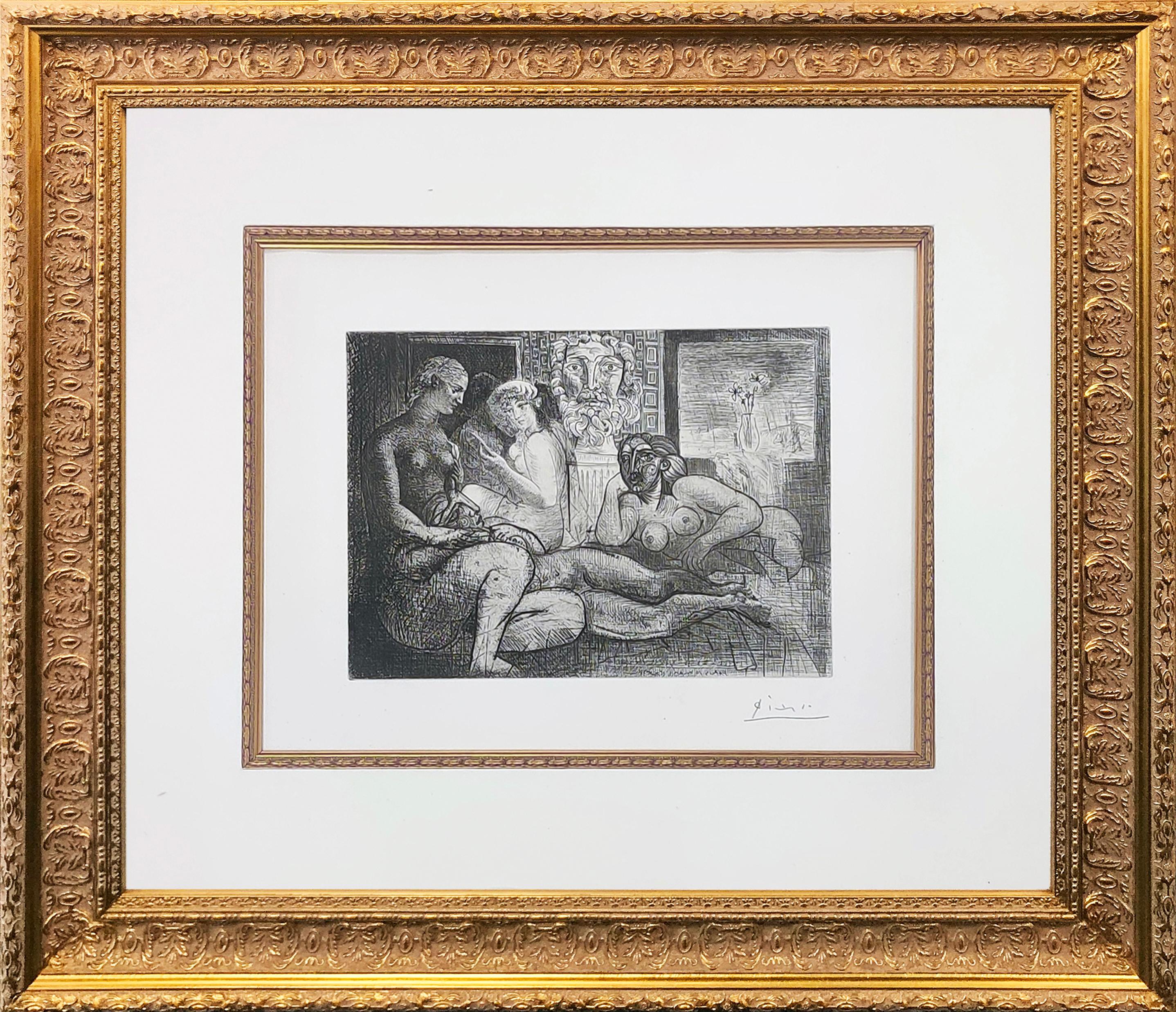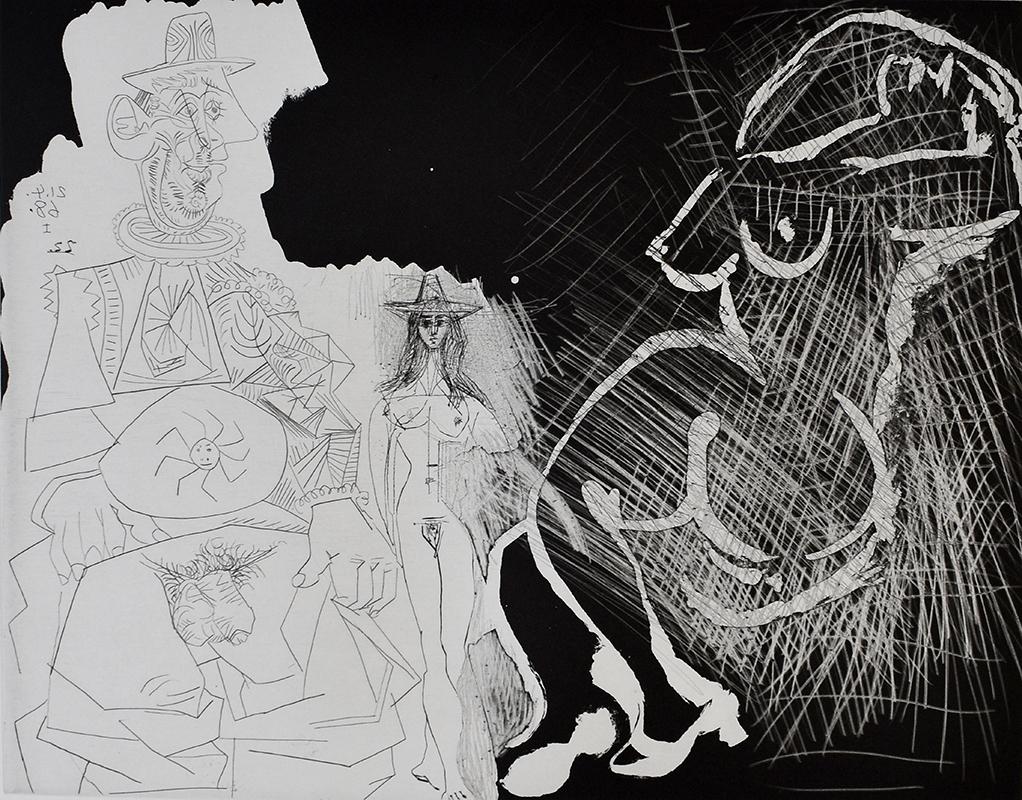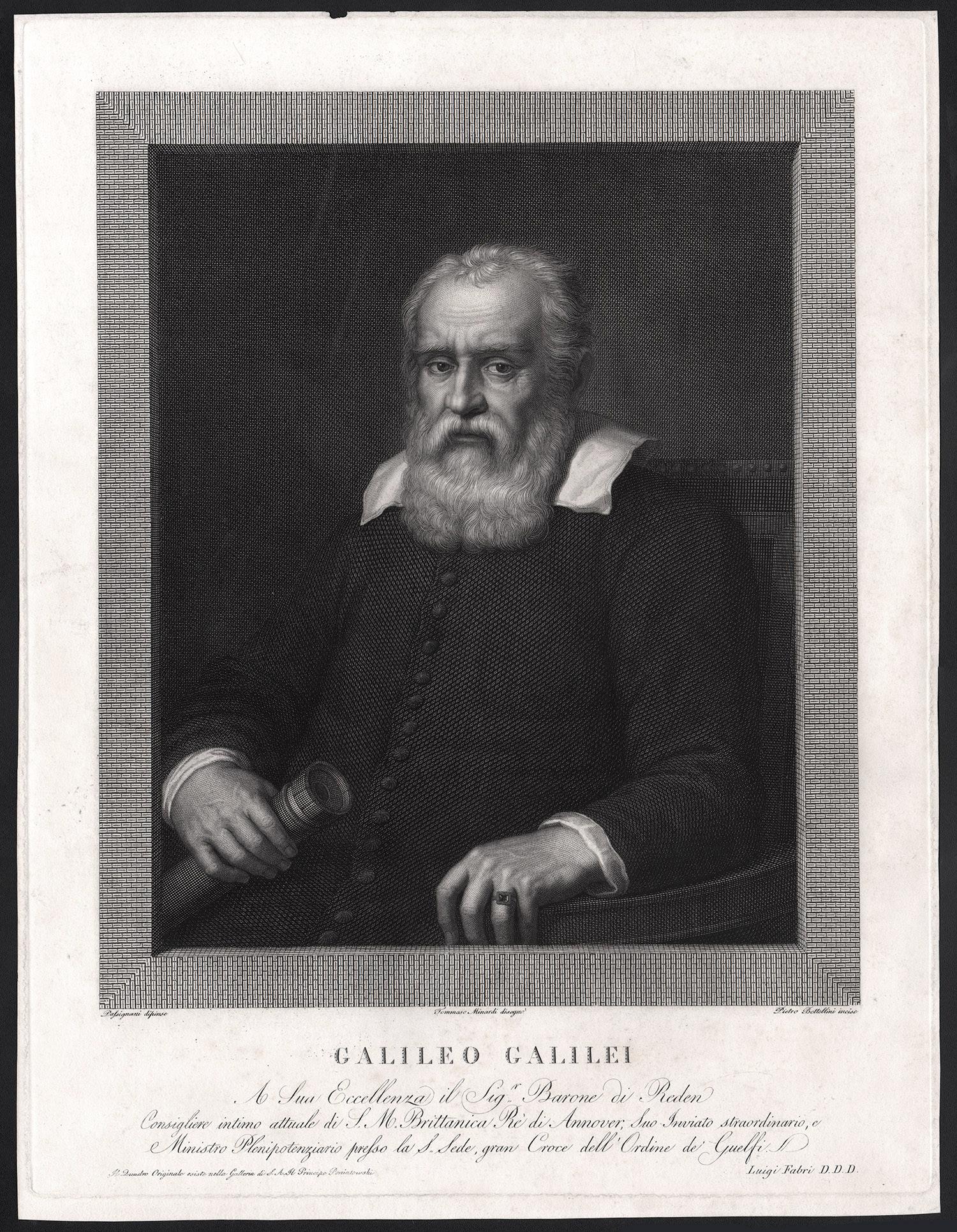Jacobus HoubrakenSir Francis Bacon: 18th C. Portrait of Philosopher, Scientist, Author, Statesman1738
1738
About the Item
- Creator:Jacobus Houbraken (1698 - 1780, Dutch)
- Creation Year:1738
- Dimensions:Height: 16 in (40.64 cm)Width: 9.88 in (25.1 cm)
- Medium:
- Period:1730-1739
- Framing:Framing Options Available
- Condition:
- Gallery Location:Alamo, CA
- Reference Number:
Jacobus Houbraken
Jacobus Houbraken was a Dutch engraver and the son of the artist and biographer Arnold Houbraken, whom he assisted in producing a published record of the lives of artists from the Dutch Golden Age. Houbraken was born in Dordrecht and learned the art of engraving from his father. In 1707 he moved to Amsterdam, where for years he helped his father with his magnum opus, his art historical work The Great Theatre of Dutch Painters (1718–21). When his father died, he assisted his mother with the last proofs of the manuscript before publishing. With this project, he started his portraits of Netherlandish celebrities, that are today in many cases the only likenesses left of these people. Houbraken was influenced by studying the works of Cornelis Cort, Jonas Suyderhoef, Gerard Edelinck and the Visschers. He died, aged 81, in Amsterdam.
- ShippingRetrieving quote...Ships From: Alamo, CA
- Return PolicyA return for this item may be initiated within 7 days of delivery.
- Richard Reynolds, Society of Friends: 19th C. Engraved Portrait by Wm. SharpBy William SharpLocated in Alamo, CAThis is an early 19th century engraved portrait of the industrialist and philanthropist Richard Reynolds by William Sharp after William Hobday. It was published in London by Rudolph Ackerman in 1817. The print is entitled "Richard Reynolds of the Society of Friends, Late of Bristol". This three-quarter length portrait of Reynolds depicts him seated, directed to right, looking towards the viewer. He is holding an open book, wearing a plain suit. A curtain in the background is pulled to the left, revealing bookshelves. Some of the books are labelled 'Addison & Watts' 'Kempis & Fenelon' 'Milton & Cowley' etc. The inscription above the portrait reads: "When the eye saw him it blessed him". The lettering below the image reads: "Richard Reynolds of the Society of Friends, Late of Bristol; Whose Life and Fortune were devoted to the Glory of God by relieving the humble in Distress.', This plate is dedicated by Permission to his Royal Highness, the Prince Regent by his most devoted very humble servant William Hobday." This engraving is printed on thick paper. The sheet measures 16" high and 12" wide. It is adhered to an archival backing in the upper left corner. There is mild discoloration and toning in the margins, but it does not involve the image. Richard Reynolds (1735-1816) was a prominent member of the Society of Friends, also known as Quakers, in the 18th and 19th centuries. He was born into a wealthy family in Bristol, England, and inherited a successful copper smelting, iron manufacturing business from his father. Despite his privileged upbringing, Reynolds was known for his deep concern for the poor and his commitment to social justice. He used his wealth and influence to support a range of philanthropic causes, including the abolition of slavery, the improvement of working conditions for miners and factory workers, and the provision of education for the poor. Reynolds was also a prominent supporter of the Quaker...Category
Early 19th Century Portrait Prints
MaterialsEngraving
- Ancient Roman Statues in the Vatican: A Grouping of Three 18th C. EngravingsBy Vincenzo DolcibeneLocated in Alamo, CAA grouping of three antique engravings depicting statues found in the Vatican, including: "Pescatore" (Fisherman), "Pastore" and "Istrione", "Gia nella Villa Mattei" (Found in the Vi...Category
1780s Old Masters Still-life Prints
MaterialsEngraving
- Portrait of William Pitt, Earl of Chatham: Rare Framed Mezzotint after BromptonBy Edward FisherLocated in Alamo, CAThis is a large framed very rare hand-colored copperplate mezzotint engraved portrait of William Pitt, the Elder, 1st Earl of Chatham by Edward Fisher, published in London in 1779 after a painting by Richard Brompton. Pitt is depicted attired in a flowing regal appearing cape, standing in an ornate room with his left hand outstretched over a serious of manuscripts and scrolls that are laying on a table or desk to his left. The table is covered by a beautiful oriental carpet. The manuscripts include the Magna Carta, a map of the colonies, including Long Island and Staten Island, and papers entitled "A Plan for the Reconciliation between Great Britain and the Colonies", "A Motion Made in 1775 for the Recall of Troops from Boston", "A Provisional Act for Settling the Troubles in America Offered to the House of Lords in 1775", and "It is doing Nothing to repeal a few Scraps of Paper or Pieces of Parchment called Acts of Parliament. But our Business is to repeal the Ill-Will and the Animosity unfortunately now subsisting between Great Britain and North America". This engraving is held by the British Museum and the British Royal Collection Trust. This large framed mezzotint engraving is presented in a brown wood frame with gold-colored beaded inner and outer trim, and a cream-colored French mat. The frame measures 31.63" high by 26.63" wide by 0.75" deep. There are three short tears along the right edge and mild creasing in the left upper, left lower and right lower corners. It is otherwise in very good condition. William Pitt (1708-1778) was a member of the British parliament from 1735 to 1761 and prime minister from 1766 to 1768. Pitt was an advocate for the American colonies leading up to the War of Independence. He called for an amiable relationship between Great Britain and the colonies and opposed the Stamp Act and military action in America. He advocated for a withdrawal of English troops from Boston in 1775 and the settling of troubles in America, as two of his manuscripts on the table outline. Pitt's colleague, Lord Shelburne (later the Marquess of Lansdowne) shared his sympathies and after Pitt's death, signed a peace treaty with the United States in 1782. The American city of Pittsburgh, Pennsylvania is named for William Pitt, the Elder. The name originated when the conflict between the British and French over territorial claims in the Northeast were settled in 1758. General John Forbes and his British army, supported by the American colonial troops, expelled the French from Fort Duquesne (which had been constructed by the French in 1754). Forbes re-named the site for William Pitt the Elder, who at the time was a British statesman. The earliest known reference to the new name, Pittsburgh, is in a letter sent from General John Forbes to Pitt, dated November 27, 1758. Pitt's son, William Pitt, the Younger, like his father, also served as British Prime Minister. Edward Fisher (1730-1785) was born in Ireland in 1730. He was originally a hatter, but learned engraving in London. He became a member of the Incorporated Society of Artists in 1766, and exhibited there fourteen times between 1761 and 1776. He engraved more than sixty portraits. In addition to this portrait of William Pitt, Earl of Chatham, after Richard Brompton he engraved several portraits after Brompton, including George, Earl of Albemarle, as well as engraved portraits after paintings by Joshua Reynolds, including the Shakespearean actor David Garrick, Hugh, Earl of Northumberland, and Elizabeth, Countess of Northumberland and Laurence Sterne, and Hope Nursing Love, as well as Robert Brown, after Mason Chamberlin, Colley Cibber, after Jean-Baptiste van Loo, Christian VII of Denmark, after Nathaniel Dance, Simon, Earl Harcourt, after Hunter, Roger Long, after Benjamin Wilson...Category
Late 18th Century Old Masters Portrait Prints
MaterialsMezzotint
- Chittee-Yoholo, Seminole Chief: Original Hand-colored McKenney & Hall LithographBy McKenney & HallLocated in Alamo, CAThis is an original 19th century hand colored McKenney and Hall engraving of a Native American entitled "Chittee-Yoholo, A Seminole Chief, No. 76", published by Rice, Rutter & Co. in 1865. This original McKenney and Hall engraving is presented in a cream colored mat, suitable for framing, with a protective clear sleeve. The mat measures 13.88" x 11.75" and the sheet measures 10.63" x 7.38. The print is in excellent condition. Col. Thomas J. McKenney was Superintendant of The Bureau of Indian Affairs from 1816 until 1830. He was one of a very few government officials to defend American Indian interests and attempt to preserve their culture. He travelled to Indian lands meeting the Native American leaders. He brought with him an accomplished artist, James Otto Lewis, who sketched those willing to participate. A large number of the most influential Indian chiefs and warriors were later invited to come to Washington in 1821 to meet President Monroe. McKenney commissioned the prominent portrait painter Charles Bird King...Category
Mid-19th Century Naturalistic Portrait Prints
MaterialsEngraving
- Lap-Pa-Win-Soe, Delaware Chief: Original Hand-colored McKenney & Hall EngravingBy McKenney & HallLocated in Alamo, CAThis is an original 19th century hand-colored McKenney and Hall engraving of a Native American entitled "Lap-Pa-Win-Soe, A Delaware Chief, No. 71", published by Rice, Rutter & Co. in...Category
Mid-19th Century Naturalistic Portrait Prints
MaterialsEngraving
- Wa-Kawn, A Winnebago Chief: An Original Hand-colored McKenney & Hall EngravingBy McKenney & HallLocated in Alamo, CAThis is an original 19th century hand-colored McKenney and Hall engraving of a Native American entitled "Wa-Kawn, A Winnebago Chief, No. 83 (The Snake)", published by Rice, Rutter & ...Category
Mid-19th Century Naturalistic Portrait Prints
MaterialsEngraving
- GARCON ET DORMEUSE A LA CHANDELLE (BLOCH 226)By Pablo PicassoLocated in Aventura, FLPlate 26 from La Suite Vollard. Bloch 226. Baer 440. Etching, engraving and aquatint, on Montval paper. Signed in pencil, from the edition of 260 (there was also an edition of 50 wit...Category
1930s Cubist Nude Prints
MaterialsEtching, Aquatint, Paper, Engraving
- QUATRE FEMMES NUES ET TETE SCULPTEE (BLOCH 219)By Pablo PicassoLocated in Aventura, FLPlate 82 from La Suite Vollard. Bloch 219. Baer 424. Etching on Montval paper. Signed in pencil, from the edition of 260 (there was also an edition of 50 with larger margins). Number...Category
1930s Cubist Nude Prints
MaterialsEngraving, Paper
- Caricature of General de Gaulle and Two Women, from: Series 347 - French SeriesBy Pablo PicassoLocated in London, GBPABLO PICASSO 1881-1973 Málaga 1881- 1973 Mougins (Spanish) Title: Caricature of General de Gaulle and Two Women, from: Series 347 Caricature du général de ...Category
1960s Portrait Prints
MaterialsDrypoint
- Galileo, late 18th century science astronomy portrait engraving printLocated in Melbourne, VictoriaGalileo Galilei (1564- 1642) was an Italian physicist, mathematician, astronomer, and philosopher who played a major role in the Scientific Revolution....Category
18th Century Naturalistic Portrait Prints
MaterialsEngraving
- Rotten Row (Hyde Park) by Ludovic-Rodo Pissarro - Wood engravingBy Ludovic-Rodo PissarroLocated in London, GBSOLD UNFRAMED *UK BUYERS WILL PAY AN ADDITIONAL 20% VAT ON TOP OF THE ABOVE PRICE Rotten Row (Hyde Park) by Ludovic-Rodo Pissarro (1878-1952) Wood engraving 13.5 x 12.5 cm (5 ¼ x 4 ⅞ inches) Initialed and titled in the plate Executed circa 1917 Artist biography Ludovic-Rodolphe Pissarro, born in Paris in 1878, was Camille Pissarro’s fourth son. Encouraged by his father...Category
1910s Figurative Prints
MaterialsEngraving, Woodcut
- Anthony van Dyck, Engraving Ernest de Mansfeld, c. 1654, Portrait, IconographieBy (After) Anthony Van DyckLocated in Greven, DEA wonderfully detailed and charismatic portrait, this exquisite work illustrates the technical mastery and artistic vision of Van Dyck. Ernest de Mansfeld's stately yet approachable expression reflects Van Dyck's refined ability to comfort and relax his subjects, resulting in a realistic and acute portrait. Ernest de Mansfeld was a German military commander during the early years of the Thirty Years War. Donning his armor and an ornate, lace collar, de Mansfeld appears as a strong commander. Without a hint of a smile, he calmly gazes out, the definition of cool and collected. Van Dyck accurately captures the sense that de Mansfeld is a man who takes his job seriously, a man worthy of commanding an army in battle. This portrait is a Mauquoy-Hendrickx State II (of II), engraved by Robertus van Voerst in collaboration with Anthony van Dyck (Antwerp, 1559 - London, 1641) as part of his Iconographie series of engraved portraits of famous people...Category
17th Century Baroque Portrait Prints
MaterialsEngraving





